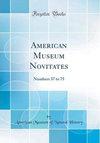加拿大育空地区第一批第三纪哺乳动物、海龟和鱼类化石
IF 1.1
3区 环境科学与生态学
Q3 BIODIVERSITY CONSERVATION
引用次数: 1
摘要
摘要尽管经过一个多世纪的勘探和野外研究,在加拿大育空地区北部的古近纪和新近纪岩石中,脊椎动物化石极其罕见。在这里,我们描述了该地区可能的第三纪脊椎动物化石的第一批记录,包括犀牛的牙齿碎片、偶蹄目的部分跟骨、池龟Chrysmys s.l.和乌龟Hesperotestudo的外壳碎片,以及Esox(狗鱼)的腭骨碎片。尽管这些牙齿碎片不能仅通过传统的古生物学方法进行鉴定,但我们使用牙釉质微观结构,主要是垂直Hunter-Schreger带的存在,将其称为犀牛科。作为北美洲北极西部唯一已知的犀牛科记录,Wolf Creek遗址的牙齿碎片支持了该分支分布在亚洲和北美洲之间、横跨白令海的假设。这些化石与Wolf Creek遗址的中新世年龄一致,该年龄是根据化石所在地附近Miles Canyon玄武岩流的辐射测量日期推断的。此外,乌龟和池塘龟化石表明育空地区当时气候温和,与其他地区的植被重建一致,表明中新世的世界比今天更温暖、更潮湿。本文章由计算机程序翻译,如有差异,请以英文原文为准。
The First Tertiary Fossils of Mammals, Turtles, and Fish from Canada's Yukon
ABSTRACT Despite over a century of prospecting and field research, fossil vertebrates are exceedingly rare in Paleogene and Neogene rocks in northern Canada's Yukon Territory. Here, we describe the first records of probable Neogene vertebrate fossils from the territory, including tooth fragments of a rhinocerotid, a partial calcaneum of an artiodactyl, shell fragments of the pond turtle Chrysemys s.l. and tortoise Hesperotestudo, and a fragment of a palatine of Esox (pike). Although the tooth fragments cannot be identified solely by traditional paleontological means, we use tooth enamel microstructure, and primarily the presence of vertical Hunter-Schreger bands, to refer them to the Rhinocerotidae. As the only known record of the Rhinocerotidae in North America's western Arctic, the tooth fragments from the Wolf Creek site support the hypothesis that the clade dispersed between Asia and North America across Beringia. The fossils are consistent with a Miocene age for the Wolf Creek site that is inferred from radiometric dates of the Miles Canyon basalt flows in the vicinity of the fossil locality. Further, the tortoise and pond turtle fossils indicate a mild climate in the Yukon at the time, consistent with the vegetation reconstructions of others that indicate a warmer, wetter world in the Miocene than today.
求助全文
通过发布文献求助,成功后即可免费获取论文全文。
去求助
来源期刊

American Museum Novitates
环境科学-动物学
CiteScore
3.00
自引率
6.70%
发文量
8
审稿时长
>36 weeks
期刊介绍:
The Novitates (Latin for "new acquaintances"), published continuously and numbered consecutively since 1921, are short papers that contain descriptions of new forms and reports in zoology, paleontology, and geology.
 求助内容:
求助内容: 应助结果提醒方式:
应助结果提醒方式:


